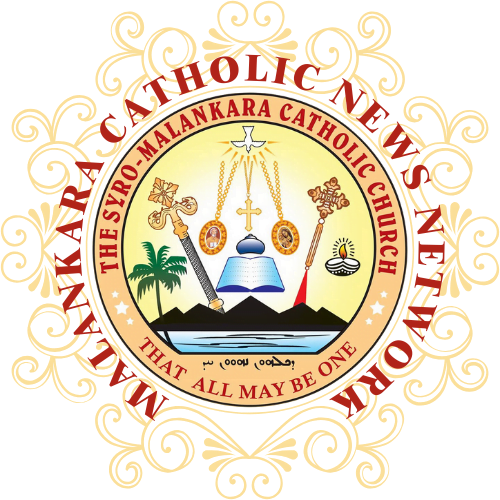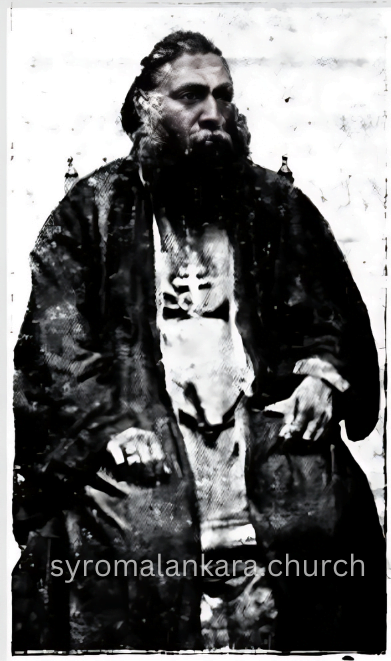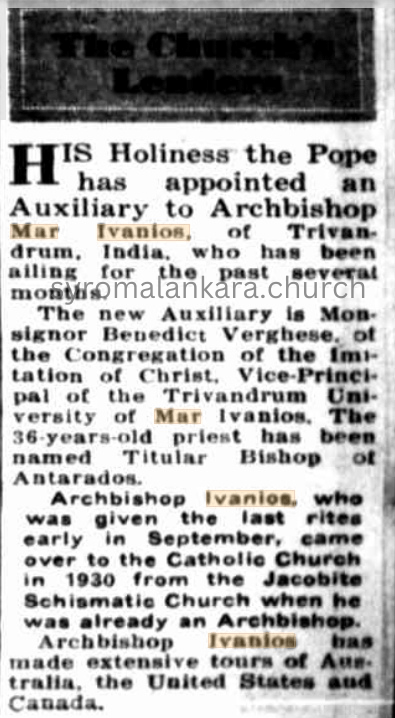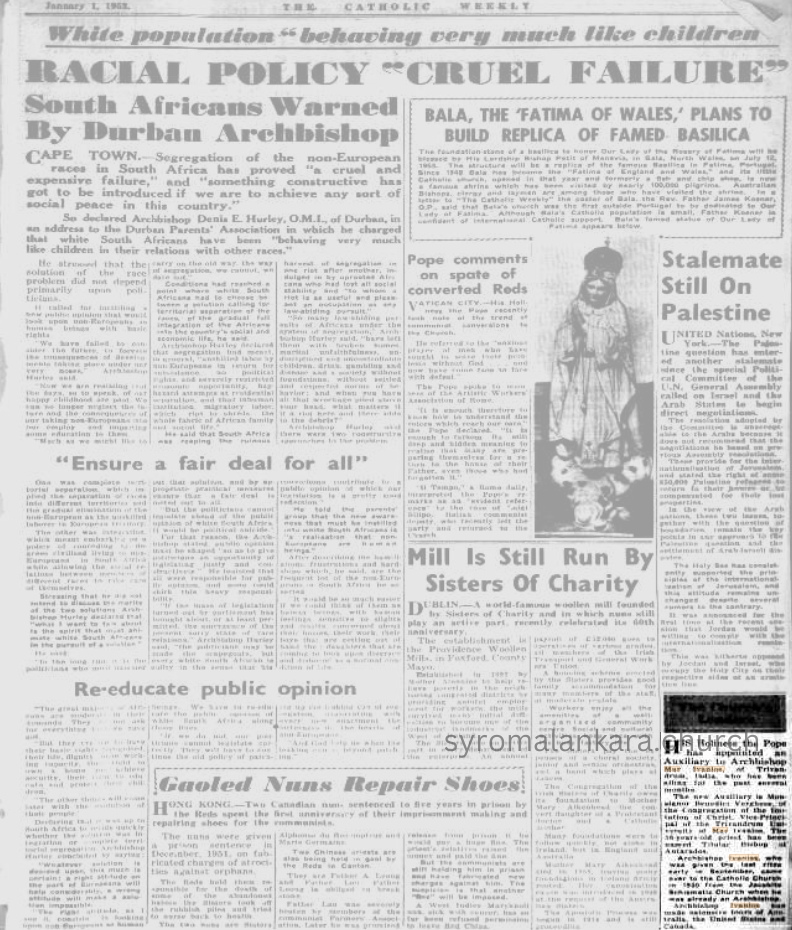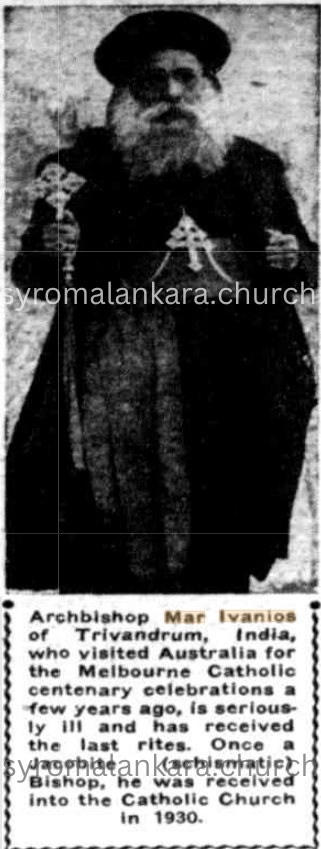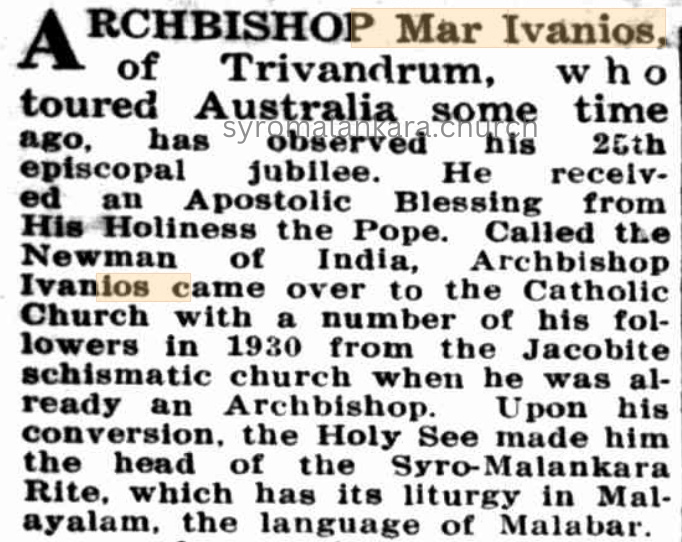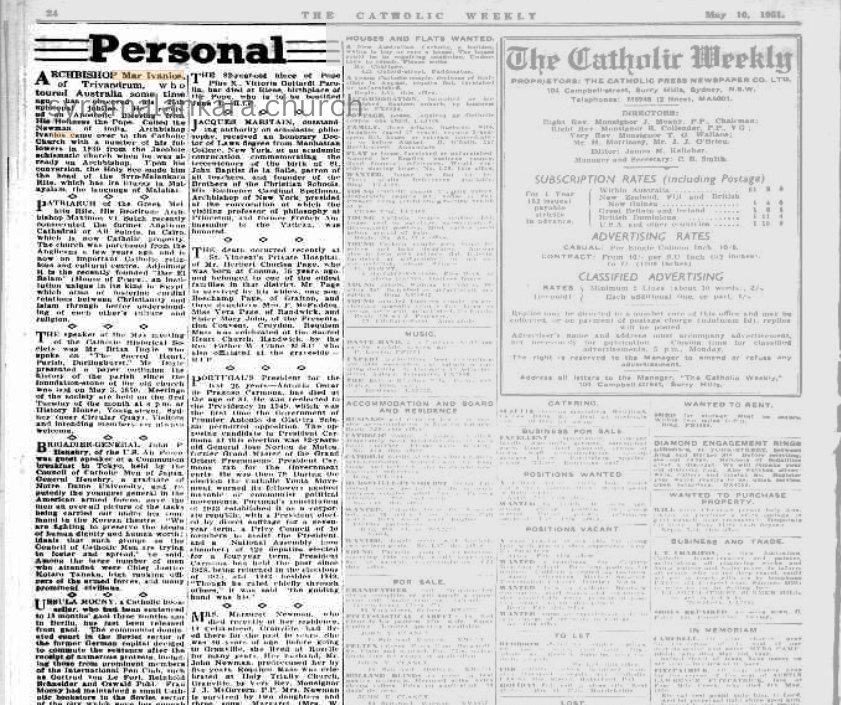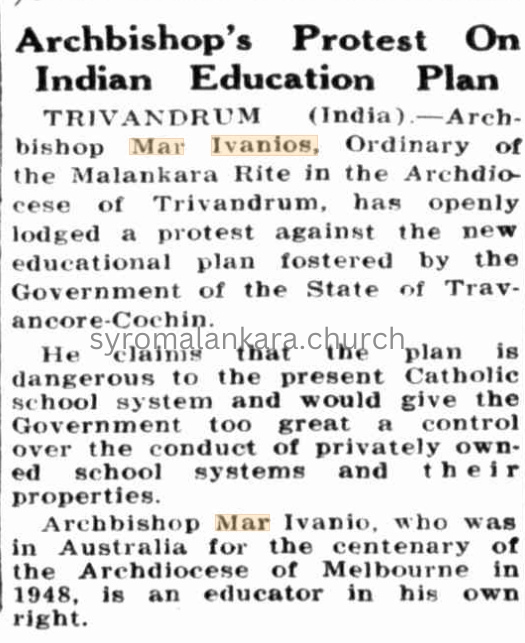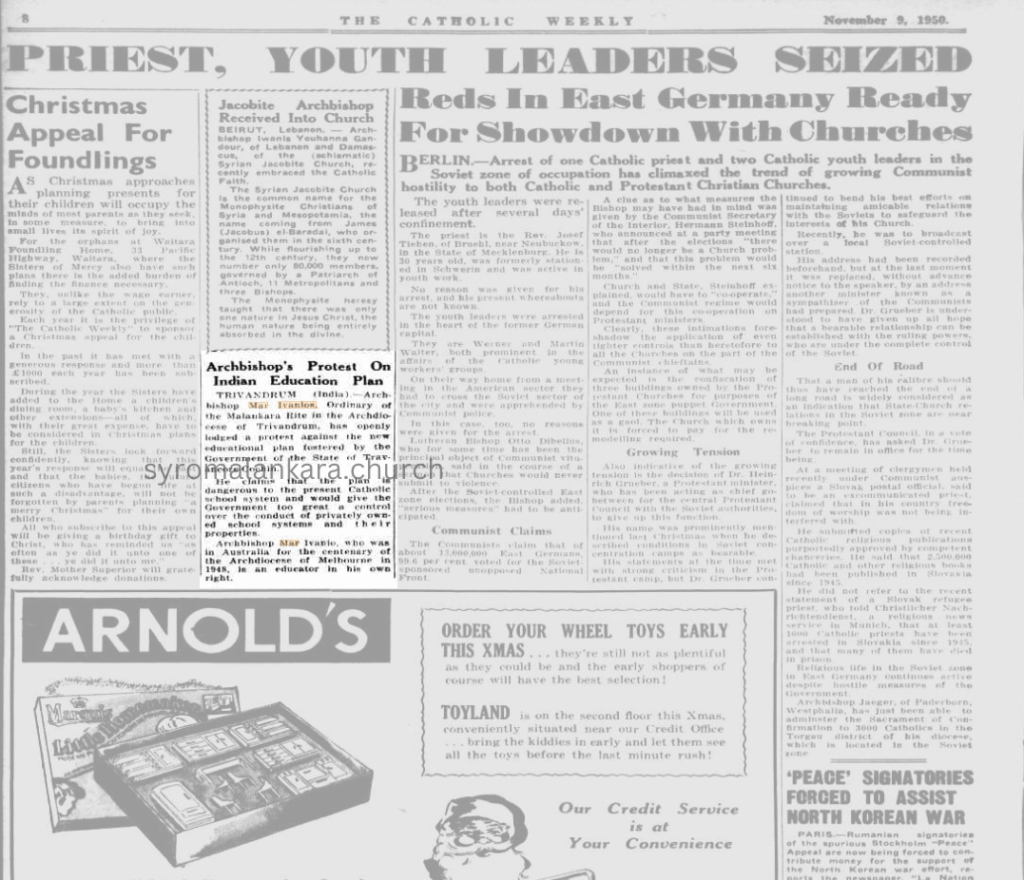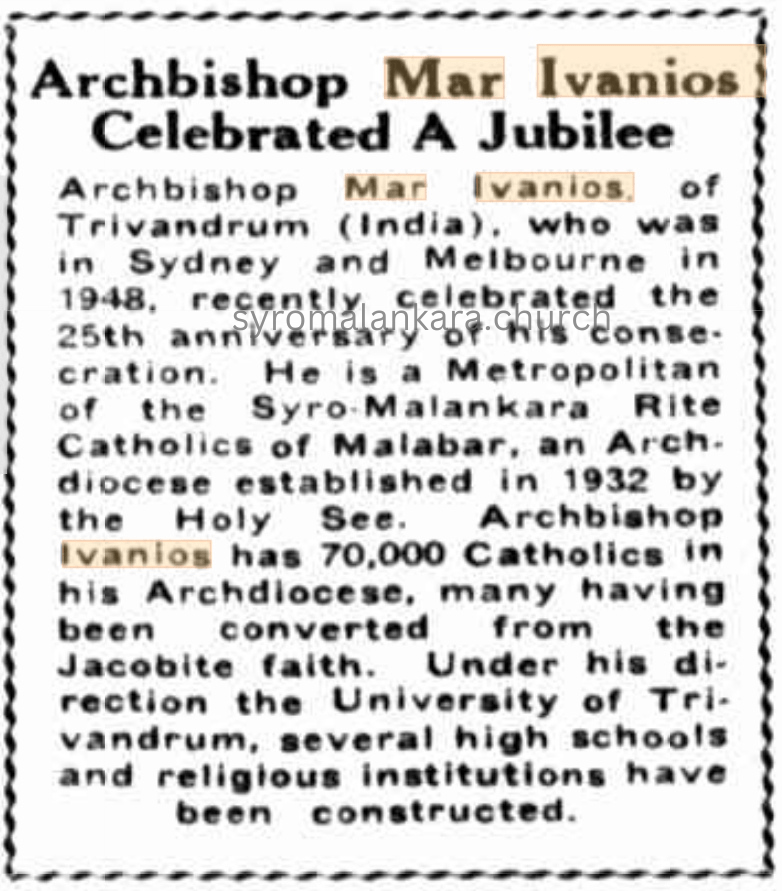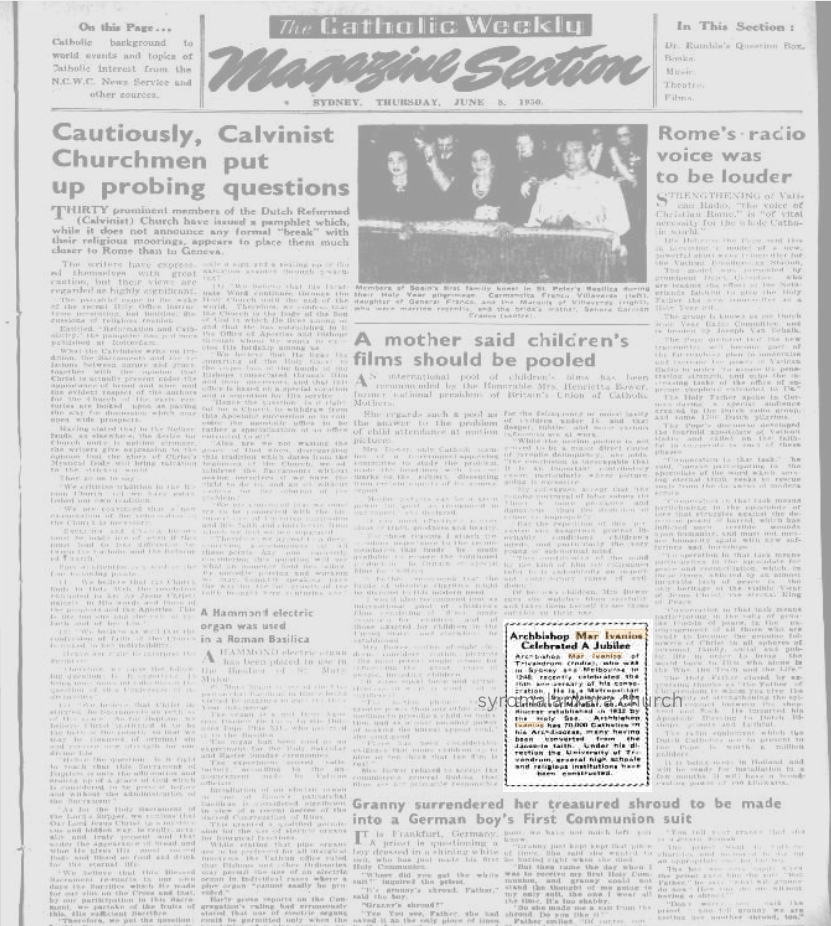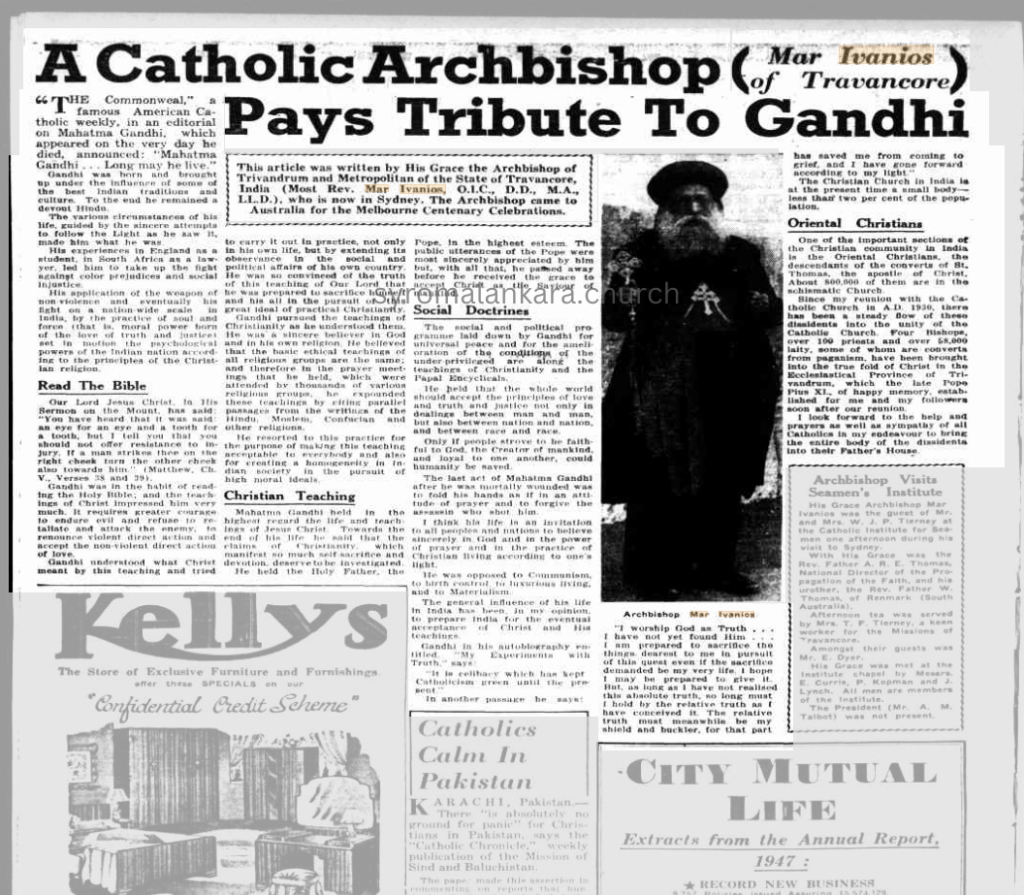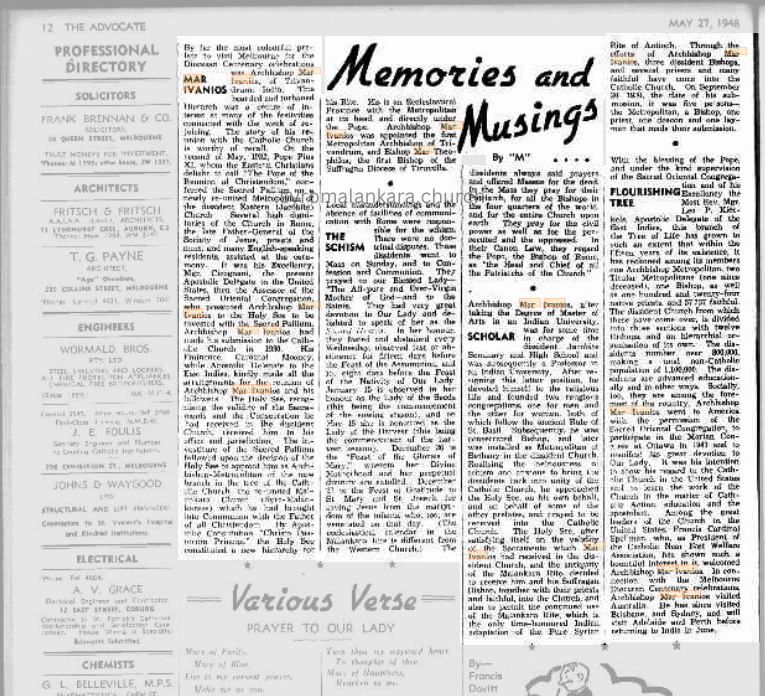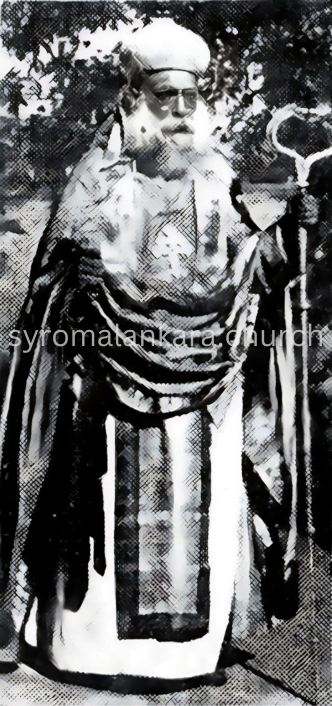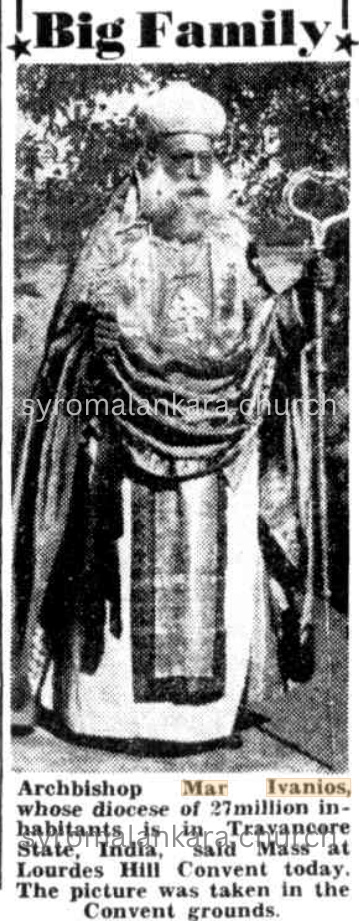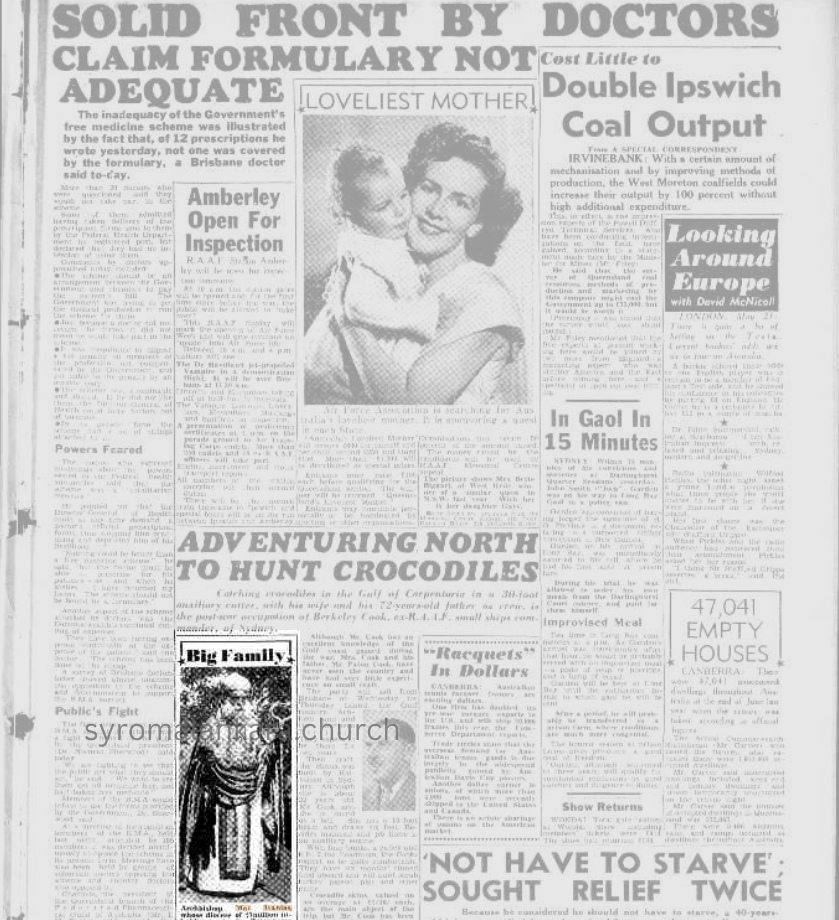Introduction: By far the most colourful prelate to visit Melbourne for the Diocesan Centenary celebrations as Archbishop Mar Ivanios, of Trivandrum, India. This bearded and turbaned Hierarch was a centre of interest at many of the festivities connected with the week of rejoicing.
Reunion with the Catholic Church: The story of his reunion with the Catholic Church is worthy of recall. On the second of May, 1932, Pope Pius XI, whom the Eastern Christians delight to call “The Pope of the Reunion of Christendom,” conferred the Sacred Pallium on a newly re-united Metropolitan of the dissident Eastern (Jacobite) Church. Several high dignitaries of the Church in Rome, the late Father-General of the Society of Jesus, priests and nuns, and many English-speaking residents, assisted at the ceremony. It was his Excellency, Mgr. Cicognani, the present Apostolic Delegate to the United States, then the Assessor of the Sacred Oriental Congregation, who presented Archbishop Mar Ivanios to the Holy See to be invested with the Sacred Pallium.
Submission and Recognition: Archbishop Mar Ivanios had made his submission to the Catholic Church in 1930. His Eminence, Cardinal Mooney, while Apostolic Delegate to the East Indies, kindly made all the arrangements for the reunion of Archbishop Mar Ivanios and his followers. The Holy See, recognising the validity of the Sacraments and the Consecration he had received in the dissident Church, received him in his office and jurisdiction. The investiture of the Sacred Pallium followed upon the decision of the Holy See to appoint him as Archbishop-Metropolitan of the new branch in the tree of the Catholic Church—the re-united Malankara Church (Syro-Malankarese) which he had brought into Communion with the Father of all Christendom. By Apostolic Constitution “Christo Pastorum Principi,” the Holy See constituted a new hierarchy for his Rite. His is an Ecclesiastical Province with the Metropolitan at its head, and directly under the Pope, Archbishop Mar Ivanios was appointed the first Metropolitan Archbishop of Trivandrum, and Bishop Mar Theophilos, the first Bishop of the Suffragan Diocese of Tiruvella.
Causes of Schism: Local misunderstandings and the absence of facilities of communication with Rome were responsible for the schism. There were no doctrinal disputes. These dissidents went to Mass on Sunday, and to Confession and Communion. They prayed to our Blessed Lady— “The All-pure and Ever-Virgin Mother of God—and to the Saints. They had very great devotion to Our Lady and delighted to speak of her as the Second Heaven.
Observances and Practices: In her honour, they fasted and abstained every Wednesday, observed fast or abstinence for fifteen days before the Feast of the Assumption, and for eight days before the Feast of the Nativity of Our Lady. January 15 is observed in her honour as the Lady of the Seeds (this being the commencement of the sowing season), and on May 15 she is honoured as the Lady of the Harvest (this being the commencement of the harvest season). December 26 is the “Feast of the Glories of Mary,” wherein her Divine Motherhood and her perpetual divinity are extolled. December 27 is the Feast of Gratitude to St Mary and St. Joseph for saving Jesus from the martyrdom of the infants, who, too, are venerated on that day. (The ecclesiastical calendar in the Malankara Rite is different from the Western Church.)
Prayers and Devotions: The dissidents always said prayers and offered Masses for the dead. In the Mass they pray for their Patriarch, for all the Bishops in the four quarters of the world, and for the entire Church upon earth. They pray for the civil power as well as for the “persecuted and the oppressed.” In their Canon Law, they regard the Pope, the Bishop of Rome, as “the Head and Chief of all the Patriarchs of the Church.”
Early Life and Career: Archbishop Mar Ivanios, after taking the Degree of Master of Arts in an Indian University, was for some time in charge of the dissident Jacobite Seminary and High School and was subsequently a Professor in an Indian University. After resigning this latter position, he devoted himself to the religious life and founded two religious congregations, one for men and the other for women, both of which follow the ancient Rule of St. Basil. Subsequently, he was consecrated Bishop, and later was installed as Metropolitan of Bethany in the dissident Church.
Efforts for Reunion: Realising the heinousness of schism and anxious to bring the dissidents back into unity of the Catholic Church, he approached the Holy See, on his behalf, and on behalf of some of the other prelates, and prayed to be received into the Catholic Church. The Holy See, after satisfying itself on the validity of the Sacraments which Mar Ivanios had received in the dissident Church, and the antiquity of the Malankara Rite, decided to receive him and his Suffragan Bishop, together with their priests and faithful, into the Church, and also to permit the continued use of the Malankara Rite, which is the only time-honoured Indian adaptation of the Pure Syrian Rite of Antioch. Through the efforts of Archbishop Mar Ivanios, three dissident Bishops, and several priests and many faithful have come into the Catholic Church. On September 20, 1930, the date of his submission, it was five persons—the Metropolitan, a Bishop, one priest, one deacon and one layman that made their submission.
Growth and Recognition: With the blessing of the Pope, and under the kind supervision of the Sacred Oriental Congregation and of his Excellency the Most Rev. Mgr. Leo P. Kierkels, Apostolic Delegate of the East Indies, this branch of the Tree of Life has grown to such an extent that within the fifteen years of its existence, it has reckoned among its members one Archbishop Metropolitan, two Titular Metropolitans (one since deceased), one Bishop, as well as one hundred and twenty-four native priests, and 57,737 faithful. The dissident Church from which these have come over, is divided into three sections with twelve Bishops, and an hierarchical organization of its own. The dissidents number over 800,000, making a total non-Catholic population of 1,100,000. The dissidents are advanced educationally and in other ways. Socially, too, they are among the foremost of the country.
International Relations: Archbishop Mar Ivanios went to America with the permission of the Sacred Oriental Congregation, to participate in the Marian Congress at Ottawa in 1947 and to manifest his great devotion to Our Lady. It was his intention to show his regard to the Catholic Church in the United States and to learn the work of the Church in the matter of Catholic Action, education and the apostolate. Among the great leaders of the Church in the United States, Francis Cardinal Spellman, who, as President of the Catholic Near East Welfare Association, has shown such a bountiful interest in it, welcomed Archbishop Mar Ivanios. In connection with the Melbourne Diocesan Centenary celebrations, Archbishop Mar Ivanios visited Australia. He has since visited Brisbane, and Sydney, and will visit Adelaide and Perth before returning to India in June.
Published in The Advocate, May 27, 1948. Copyright of The Advocate.
